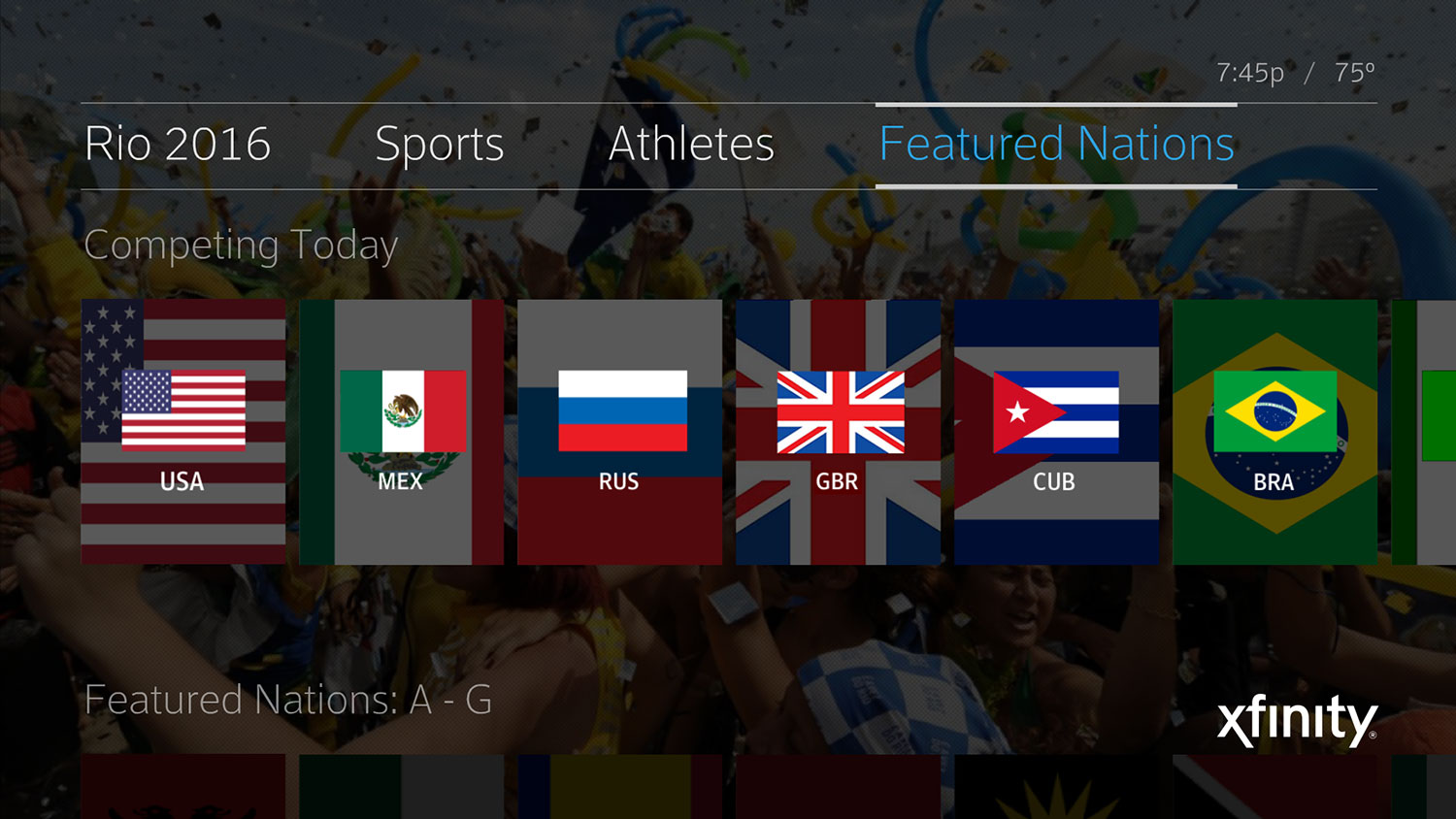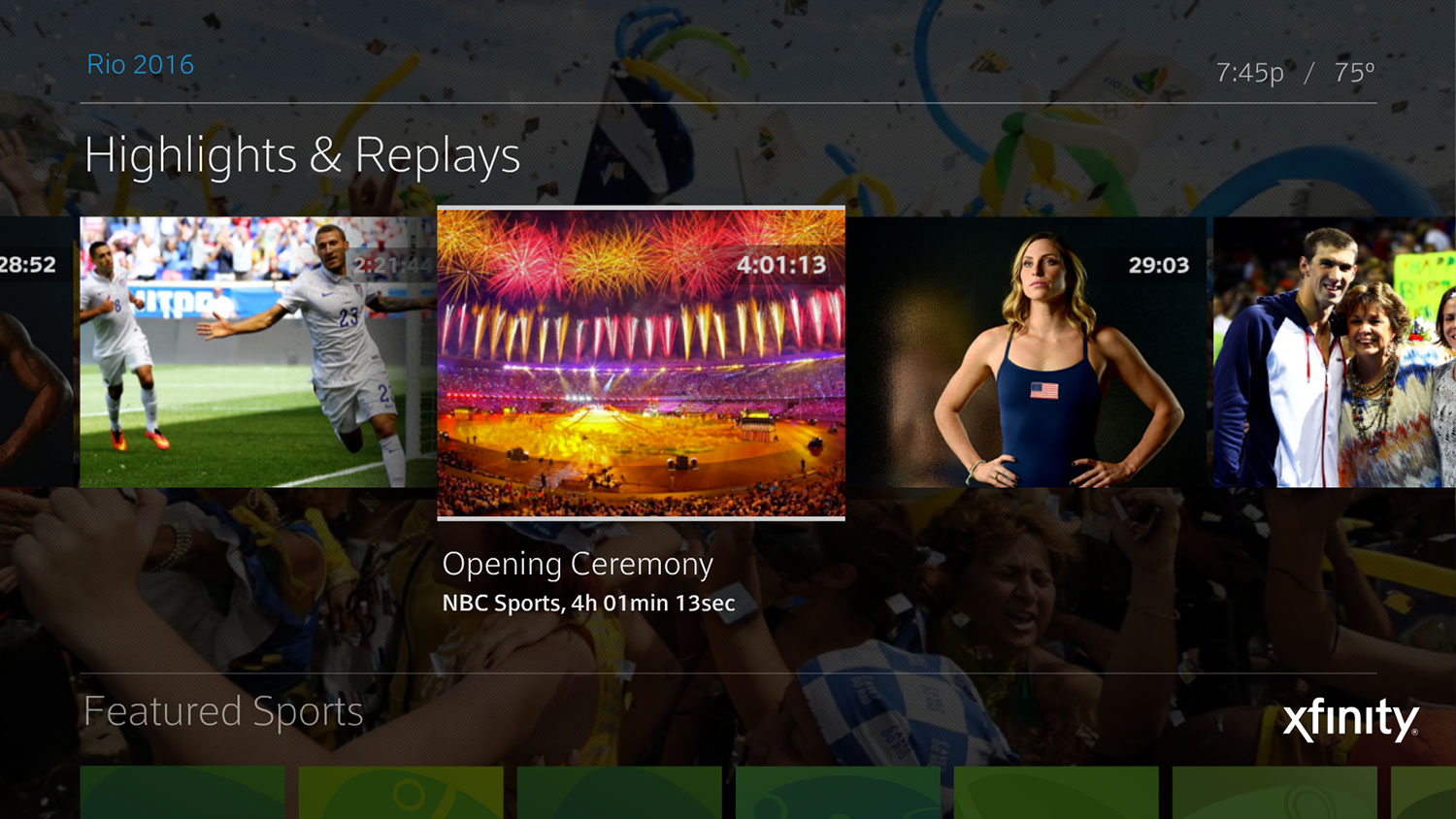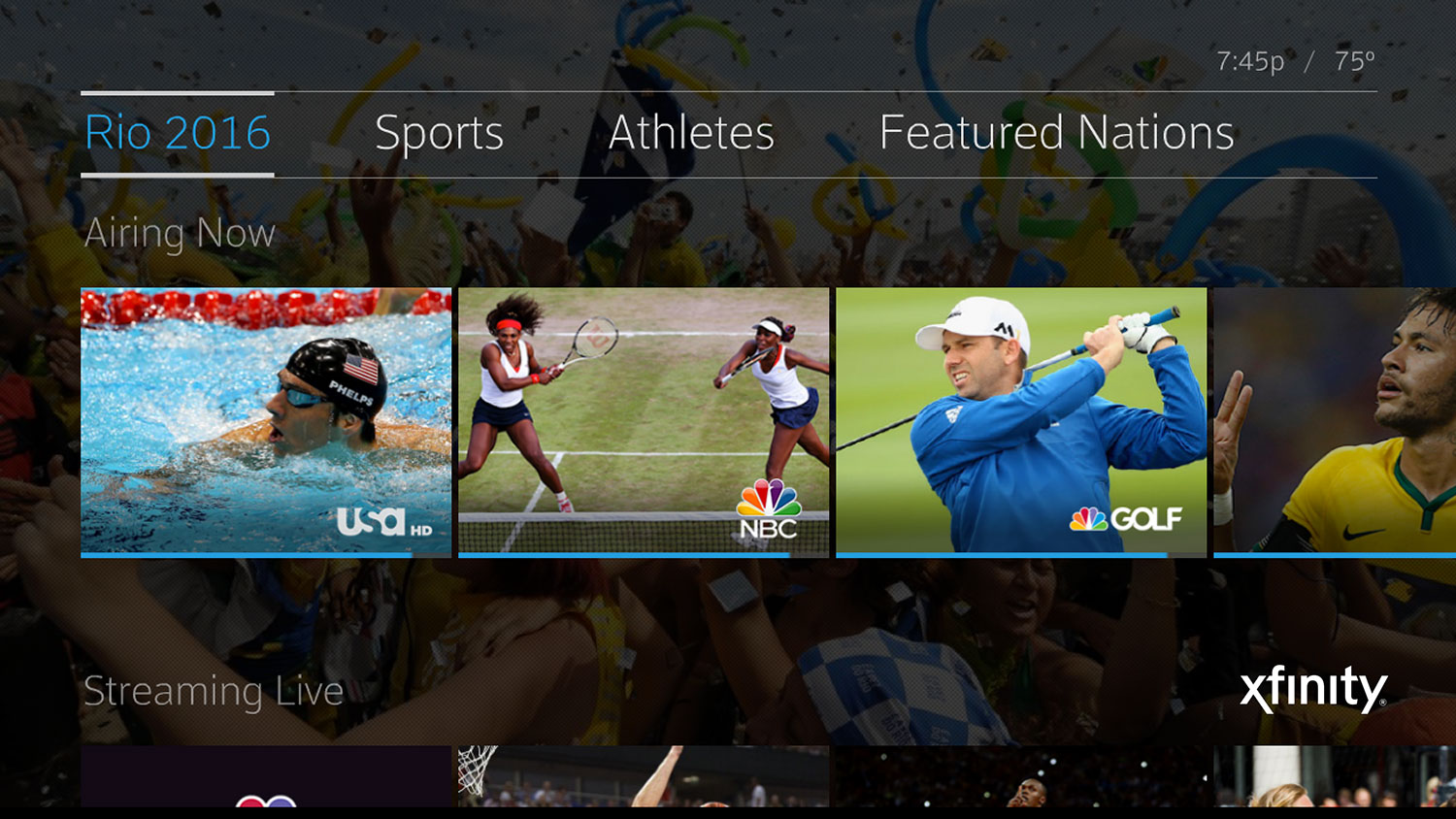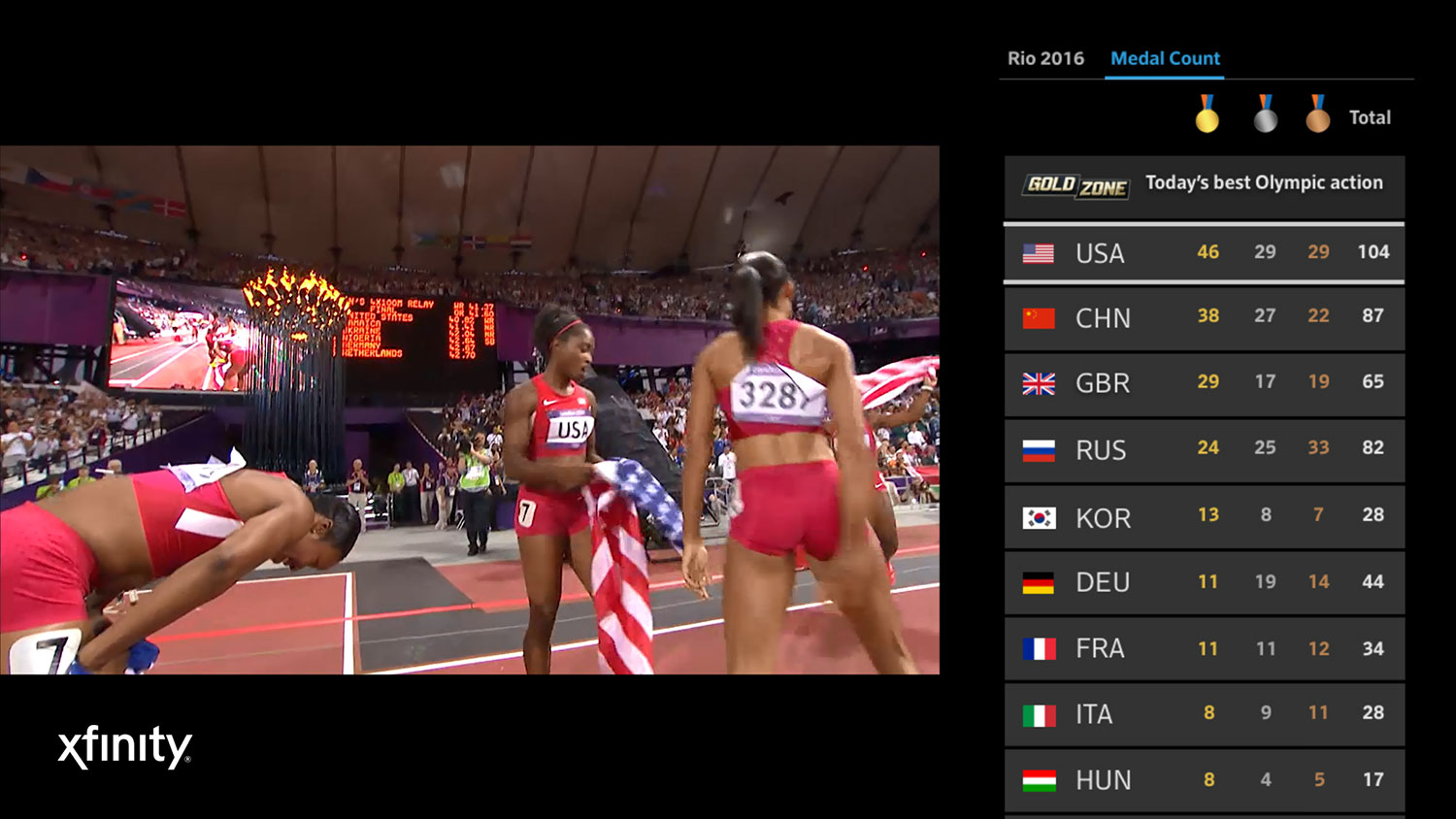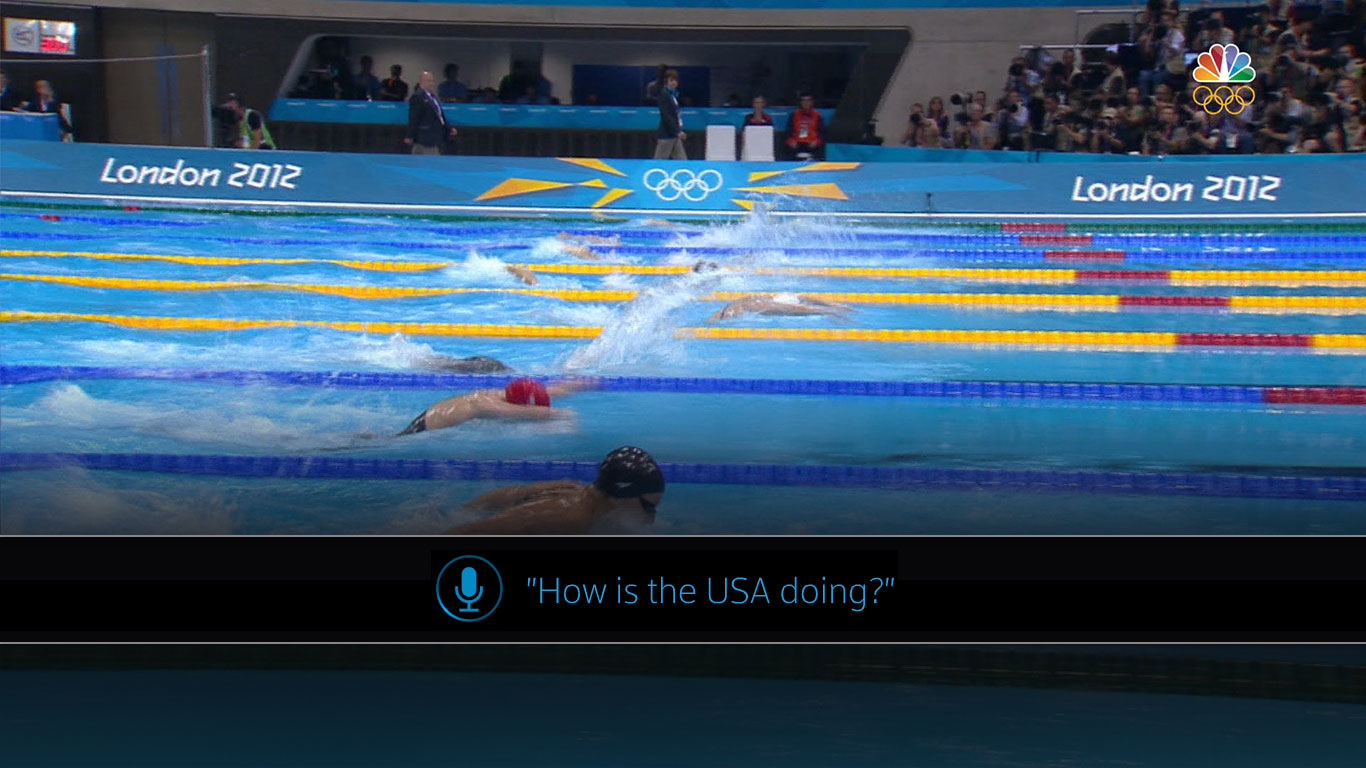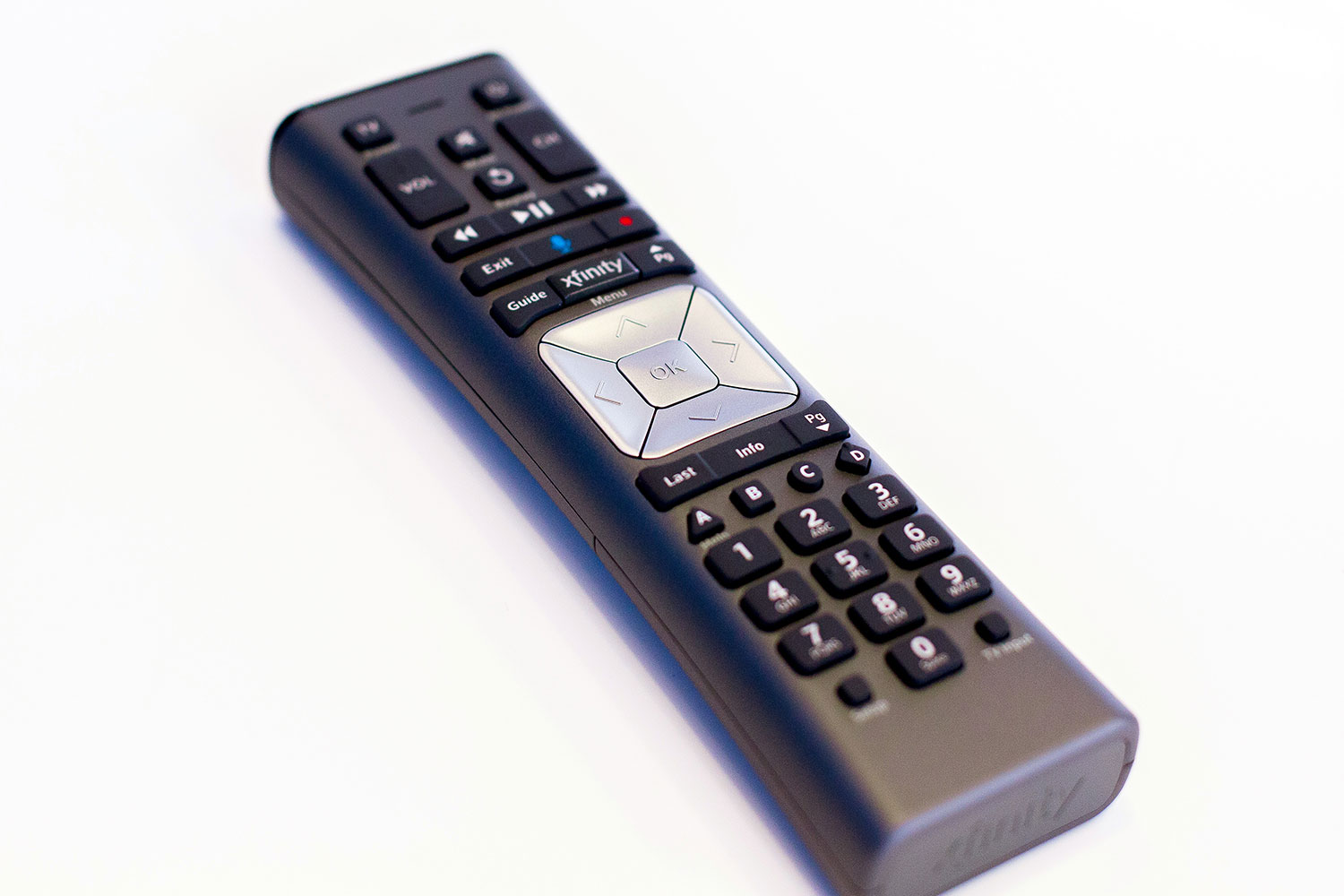
We know what you’re thinking, though: 6,000 hours is serious overkill. Even if you had some magic sleep deprivation cure — and no other earthly obligations — that’s nearly a year’s worth of swimming, sprinting, and pommel horses when lined-up back to back. But, as Comcast’s vice president of product management for the X1 platform, Peter Nush, explained, it’s not just the sheer amount of coverage that makes the company’s Rio binge-athon special. It’s how intuitively you can pick and choose all those golden moments that should make dyed-in-the-wool Olympic nuts excited. And that starts and ends with Comcast’s flagship, cloud-based DVR system, the X1.
Surfing Rio via the X1
Ahead of Friday’s kickoff of the Rio games — which will not-so coincidentally be hosted by Comcast’s NBCUniversal networks — the company has boosted its X1 platform with a host of Rio-ready features. The new setup is designed to not only help you find every second of network broadcast coverage you covet, but also to serve up analytics, medal counts, stats, highlights, internet streams (both live and on-demand), and much more.

The new Rio interface begins with a simple block of tiles that pop up just below the X1’s main menu, each with its own speciality. Themes are grouped by Sport, Athlete, Featured Nation, and Major Moments (Rio 2016), the latter of which Nush calls “the Rio hub of all things Olympics.” Clicking on the Rio 2016 tile lays out all of the major networks covering the live events on the top bar for easy access. Nush reminds us that Rio will be the first Olympics since 1996’s Atlanta games to broadcast most events live in our time zone, so live action is a big deal this year. But unlike Rio’s bonanza, the Atlanta games offered a measly 172 hours of coverage.
The front page also offers easy access to on-demand coverage, or you can (of course) simply surf the traditional scrolling menu. But digging a little deeper grants access to virtually every Rio moment caught on camera, bringing you closer to the games than ever before.
Multiple ways to watch
Just below the network coverage on the Major Moments page, you’ll find a row of internet streams, both live and on-demand, which actually account for the bulk of coverage (around 5,000 hours or so). You can find many of these streams online, but X1 makes it easy to access them all in one place, both on your TV screen from home, and on your mobile device via the X1 app when you’re away. If you missed something, you can also easily find the highlights and replays from the day that was, all from the main homepage.
For huge fans of live events, X1 is an enticing pay-TV perk.
You can also tailor things further thanks to X1’s accompanying app, built right into the main menu. The app allows you to dig up gobs of stats, including an info page on every major athlete (200-300 in all, we’re told). Selecting a favorite athlete or event on screen will allow for auto-recording and even alerts via email or text to remind you what’s on when. That makes it easy to follow your favorite athletes, events, or nation of choice with a single click, so you never miss the footage you care about most. “This is about finding and discovering those moments most important to you,” Nush says.
By integrating all the internet feeds, the X1 also makes the coverage more personal. Say the network cuts away from the floor exercises right before Gabby Douglas comes up. You can easily follow Douglas’ routine via the web feeds live, putting you in charge. And if you can’t find what you want in a visual search, you can even pull up coverage via the voice-activated remote, which Comcast is sending out free to all X1 customers who don’t already have it. Just say, “Show me Gabby Douglas coverage,” to the remote, and Nush says the system will find it.
Always recording
All those features are great for those with proactive viewing habits. But what if you like to just randomly tune into the games after work? For those viewers, one of the coolest Rio features is the ability to automatically restart all major events during a live TV broadcast. Tuning into NBC’s broadcast in select markets (including New York, Chicago, Philadelphia, the San Francisco bay area, Washington D.C., Miami, and the Hartford-New Haven area) will pull up a pop-up prompt that asks, “Do you want to watch from the beginning?” One click and you’ve turned back time Superman style, blending the convenience of channel surfing with the magic of on-demand access.
Comcast rolled out the one-click rewind feature about a year and a half ago as part of a new technology called IVOD, short for Instant Video On Demand. Essentially, it allows your connected X1 box to access Comcast’s own bank of VOD content, without having to track the content down in another menu. The feature began in beta with a single season of a show on one network, but for Rio, Comcast has expanded its reach significantly.
Gold Zone fever
Maybe the coolest feature for those who don’t want to miss any of the Rio games’ high-stakes drama is the Gold Zone channel. Modeled after the NFL’s RedZone channel, Gold Zone will be the hub to watch virtually all medal events in progress. Like RedZone does with NFL scoring, Gold Zone will take users to final medal heats from around the games, so you’ll always know who’s just about to go for gold — and you’ll be able to catch each moment as it happens.
Happier fans
As part of a broader X1 media blitz, Nush claims the big pitch for the platform as the ultimate Olympic destination isn’t just about Rio, or even the bottom line. While Comcast used to reap a one-time fee to upgrade customers to X1, it’s now free. Nush says it’s all about research indicating X1 users are happier than those without it — and happy customers are loyal ones. The free X1 voice remote, for instance, launched a year ago and there are still a large number of X1 users who aren’t even aware of it. Comcast wants to change that.
Rio is a marquee event that’s as much about showing X1’s mettle as it is winning the Olympics coverage arms race, and these features are part of an evolution that won’t end when the games close August 21. What Comcast learns from Rio will be applied to other major events, from golf majors to NFL playoffs, and beyond. And though the cord-cutting revolution certainly isn’t going anywhere, for huge fans of live events, X1 is an enticing pay-TV perk.
Regardless of Comcast’s plans for X1, now or in the future, the system goes beyond offering mounds of coverage at your fingertips; X1 offers real proof that, while cable companies may represent the old guard in a big way, these old dogs can still show off some cool new tricks.
You can catch the Rio games on NBCUniversal stations beginning this Friday.
Updated 8-2-2016: This piece was updated to clarify iVOD’s availability only in select markets, as well as X1’s availability free to customers with qualifying packages.
